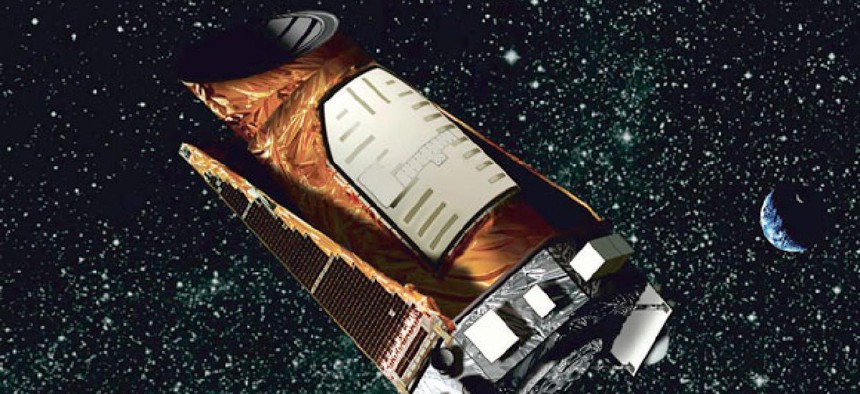Awesome Spaceship that Discovered Hundreds of New Planets May Soon Be Space Junk

This artist rendition provided by NASA shows the Kepler space telescope. NASA/AP
The Kepler spacecraft started its mission from Florida in 2009, but the it may not last much longer.
Kepler, a spacecraft designed to find habitable planets, may not last until the intended end of the mission in 2016. Launched in 2009, Kepler was originally meant to last only three and a half years, but its life was extended in 2012 because of all the wealth of data it was producing. Already Kepler has confirmed the existence of at least 100 planets and found thousands more candidates for planet status.
Named for the German scientist who described the laws of planetary motion, Kepler finds planets by staring at the sun and watching for changes in light as planets pass in front of it. But it doesn’t just stare at one sun—it simultaneously measures the brightness of over 100,000 stars every 30 minutes. To do this, Kepler needs to keep a steady line of sight. Four spinning wheels within the spacecraft help it maintain that balance.
Last July, one of the wheels malfunctioned and stopped working. Kepler continued providing accurate data because it only needs three wheels to function. But in January, a second wheel started acting up. In an attempt to mitigate the problem, mission control put the spacecraft in “safe mode” for 10 days and allowed the wheels to rest.


